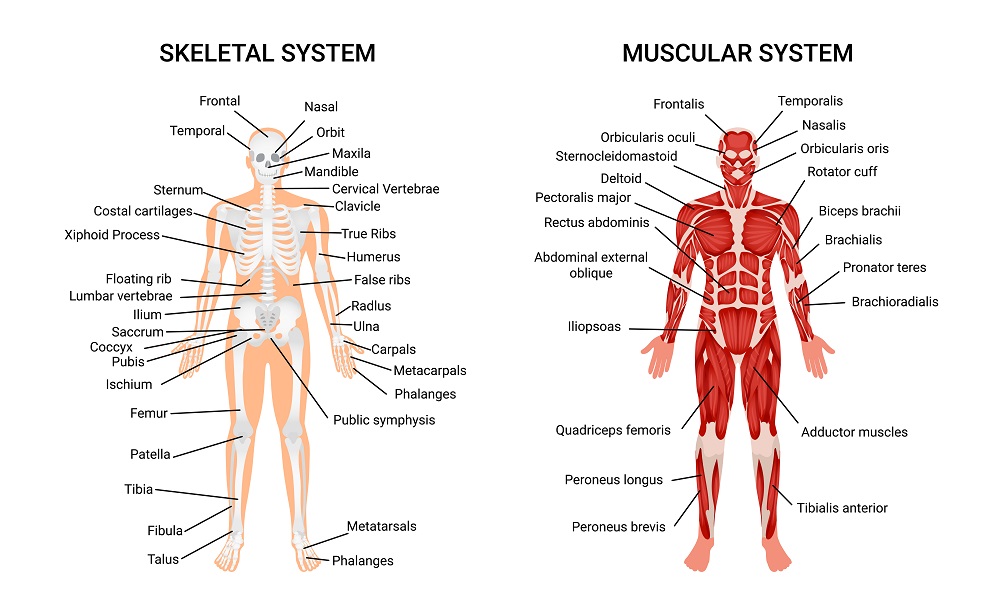Medical coding involves translating medical procedures, diagnoses, and treatments into standardized codes that are used for billing and reimbursement purposes. To be an effective medical coder, it is essential to have a solid understanding of anatomy and physiology.
This article will provide an in-depth overview of the fundamental concepts in anatomy and physiology that every medical coder should be familiar with.
Introduction to Anatomy and Physiology
Anatomy is the study of the structure of the human body, while physiology focuses on how the body functions. Medical coders need a strong foundation in both disciplines to accurately assign codes based on the patient’s condition and the procedures performed.
Basic Body Systems
Integumentary System
The integumentary system comprises the skin, hair, nails, and sweat glands. Its primary functions are to provide protection and regulate body temperature. Understanding the anatomy and functions of this system is essential when coding for conditions such as dermatitis or skin cancer.
Musculoskeletal System
The musculoskeletal system comprises bones, muscles, tendons, and ligaments. It provides support, movement, and protection for the body. Medical coders must be familiar with the anatomy of different bones and joints to accurately assign codes for fractures, dislocations, or joint replacements.
Cardiovascular System
The cardiovascular system comprises the heart, blood vessels, and blood, working together to transport oxygen, nutrients, and hormones throughout the body. Coders should understand the anatomy and functions of the heart and major blood vessels to assign codes for conditions like heart disease or hypertension.
Respiratory System
The respiratory system consists of the lungs, bronchi, and trachea, enabling the exchange of oxygen and carbon dioxide within the body. Familiarity with the anatomy and physiology of this system is crucial for coding respiratory conditions such as asthma or chronic obstructive pulmonary disease (COPD).
Digestive System
The digestive system is accountable for the process of breaking down food and absorbing essential nutrients. It comprises the mouth, esophagus, stomach, intestines, and other organs. Medical coders should have a solid understanding of the anatomy and functions of these organs to assign codes for conditions like gastritis or gastrointestinal bleeding.
Nervous System
The nervous system controls and coordinates body functions. It comprises the brain, spinal cord, and nerves. Accurate coding of conditions such as stroke or peripheral neuropathy requires knowledge of the anatomy and physiology of this complex system.
Endocrine System
The endocrine system regulates hormones and metabolism. It consists of glands such as the thyroid, pancreas, and adrenal glands. Medical coders must be familiar with the anatomy and functions of these glands to assign codes for conditions like diabetes or thyroid disorders.
Urinary System
The urinary system eliminates waste products from the body. It comprises the kidneys, bladder, and ureters. Understanding the anatomy and functions of this system is crucial when coding for conditions like urinary tract infections or kidney disease.
Reproductive System
The reproductive system is responsible for sexual reproduction It consists of organs such as the ovaries, uterus, and testes. Medical coders should have a basic knowledge of the anatomy and functions of these organs to assign codes for conditions like infertility or reproductive cancers.
Anatomical Terminology
Medical coders need to be familiar with anatomical terminology to accurately describe the location and relationships between body structures. Understanding terms like anterior, posterior, proximal, and distal is essential for assigning codes correctly.
Major Organs and their Functions
This section will provide an overview of the major organs in the body and their functions. It will cover organs such as the heart, lungs, liver, and kidneys, explaining their roles in maintaining overall health.
Common Diseases and Conditions
In this section, we will explore common diseases and conditions across different body systems. It will include examples such as diabetes, hypertension, arthritis, and respiratory infections, providing a brief description of each condition.
Diagnostic Procedures
Medical coders must understand various diagnostic procedures used to diagnose and monitor diseases and conditions. This section will cover procedures such as X-rays, MRIs, blood tests, and biopsies, explaining their purpose and how they are coded.
Coding Guidelines for Anatomy and Physiology
Accurate coding requires adherence to specific guidelines and coding conventions. This section will outline the coding guidelines for anatomy and physiology, including the use of modifiers, sequencing rules, and documentation requirements.
Importance of Anatomy and Physiology in Medical Coding
Understanding anatomy and physiology is vital for medical coders to assign accurate codes. This section will highlight the importance of this knowledge in ensuring proper reimbursement, minimizing claim denials, and maintaining overall coding integrity.
Conclusion
In conclusion, a solid foundation in anatomy and physiology is essential for medical coders to accurately assign codes and ensure proper reimbursement. Familiarity with the body systems, organs, common diseases, and diagnostic procedures is crucial in this profession. By continuously updating their knowledge and staying informed about advancements in the medical field, medical coders can excel in their roles and contribute to the efficient functioning of the healthcare system.


1 thought on “Anatomy and Physiology Fundamentals for Medical Coders”